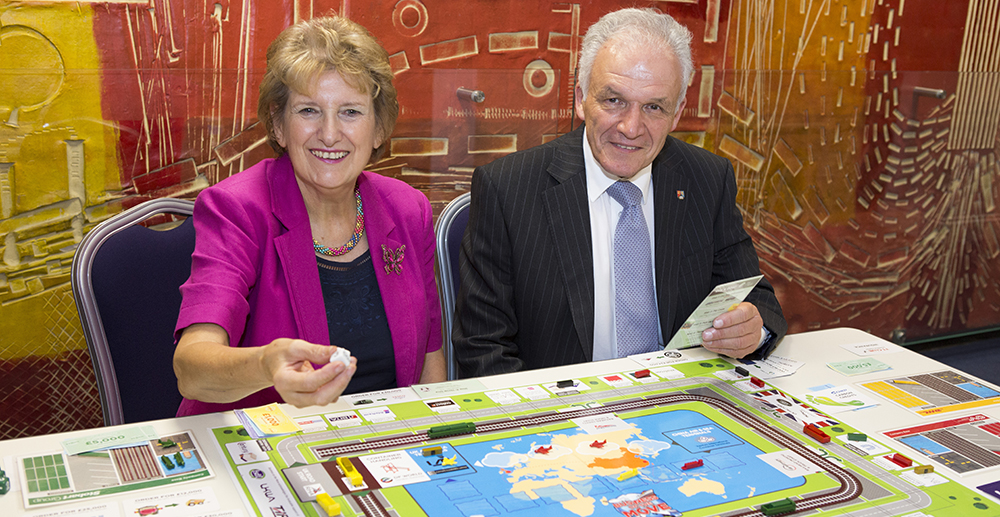Business on the Move

What was the first step you took in creating the visual design for your game?
The first step was research, research and then more research!
It was crucial, given we wanted to create a supply chain game, that we understood what the main transport modalities were and how they inter-related. In our case, it soon became clear that plane and ship dominated international freight movements. Less evident at the time was whether, in terms of overland freight, we should incorporate a rail and road connection within our game or go for a truck and ‘white van’ linkage. We chose the former on the basis of the learning that the game could then develop around options for freight movements reducing their carbon footprint.
What came next?
Once transport modalities were finalised, the next step was to identify the trade ‘map’ we were going to feature. There are endless opportunities here but, given our main target audience at the time was UK school pupils, we chose to feature the supply chain of consumer goods from China into the UK. The reasoning was;
a) The consumer goods market (such as toys, phones and TVs) was a market that our target group of young learners could easily relate to
b) China was the biggest single source of consumer goods into the UK
c) Sponsorship opportunities were more obvious to us
See board layout
What features of your game are designed to aid gameplay and comprehension?
The gameplay might appear sophisticated on opening the box, but the game is actually easy to play, evidenced by its use in primary schools.
The use of real businesses and their logos helps players to “get” the game and relate it immediately to their own, albeit limited, understanding of branding and business reality.
In terms of game methodology, the ‘Rules’ for players are contained on one small (A6) back-to-back card.
We constructed a simple strapline that, if followed, should make gameplay smooth and straightforward:
“Choose one side of the Rules card or the other (‘Air & Sea’ or ‘Rail & Road’). Then carry out the 4 steps listed in the order 1-4 to play your turn”.
A comprehensive and illustrated “Guide” booklet with every game provides all the extra detail that a trainer or teacher might need to know.
The layout of all the game pieces in the box enables all playing pieces and cards to be identified conveniently, useful at the end of the game too when all items are returned to the box.
Audio-visual aids in the form of a PowerPoint and a video are available to support multiple games being played at the same time.
The use of a ‘Banker’ helps to ensure the rules are followed and players understand the process of play. Indeed the fact the Banker is involved in every turn, not only as the Bank, but also as referee and asset manager means it becomes a popular role to perform.
See mini rules
Is there any reasoning behind the colours you chose?
The colour of the game’s pieces has been carefully designed to match businesses’ own branding.
It is important (young) players relate the game to the real world of business.
Other mainstay colours see blue relate to the sea and white to clouds, while green links to land-based transport movement.
Colours as a whole must not jar or confuse.
Careful colour linkages are put in place to connect game cards to the game board.
See company bases
If you were to redesign the visual aspect of your game is there anything you would change?
The extra fold in the second edition’s game board, reducing its folded size to A3 rather than A2, has proved very popular.
Likewise, the game box has therefore been able to have half the previous box’s surface area while becoming higher, creating a more appealing and practical shape.
Smaller changes, through experience, were made also to the size of game pieces, ships being made, for instance, a little wider to improve their stability when being moved on the game board


